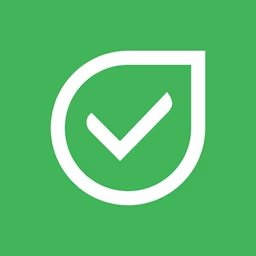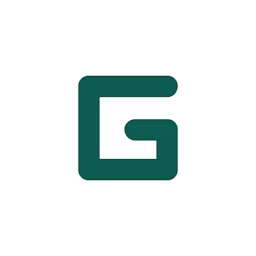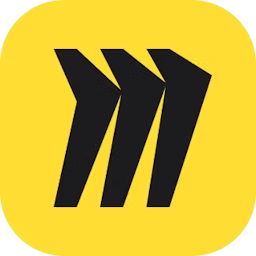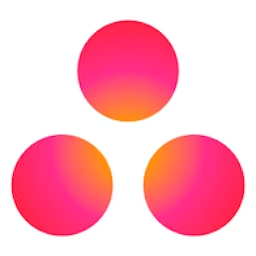As a project manager, Gantt chart and Kanban tools software are essential for daily project management, planning, and tracking. While their core ability is to manage projects, they have unique ways of visually presenting the tasks and creating interdependencies.
In essence, Gantt chart software provides a structured timeline-oriented view of projects. Kanban tools software offers a more flexible and adaptive approach to managing work and processes. Selecting between the two depends on the nature of the projects your business handles and the structure of the aligned teams.
This article discusses Gantt chart vs. Kanban tools software for their similarities and differences so you can select the right one for your projects. We've also included each category's top five products based on verified software reviews. Read more.

What is Gantt chart software?
Gantt chart software is a visual project management tool that provides a timeline view of tasks and activities within a project. It is used for planning, monitoring, and tracking projects. A Gantt chart typically represents tasks as horizontal bars along the time axis, providing the duration required to complete them. These bars are positioned according to their start and end dates, reflecting their chronological sequence and dependencies.
Gantt chart software offers a clear overview of a project’s progress, including tasks underway, nearing the deadline, and completion. This helps coordinate team efforts, manage resources, and identify potential bottlenecks and delays in delivery.
Core features of Gantt chart software
The core features of Gantt chart software include:
Bar charts: Visually represent tasks via a horizontal or rectangular bar chart. This bar extends horizontally along a timeline, indicating the start and end dates of the tasks. The time for these tasks can be adjusted to suit the project timeframe. The feature also allows viewing the project's progress across days, weeks, months, or even years.
Color codes/icons: Represent tasks where different categories have been color-coded for clarity. The categories include project status, priority level, types, resource allocation, and dependencies. The feature allows customizing color codes and icons to represent any relevant data or attributes specific to projects. For example, project location, client name, or project phase.
Project scheduling: Create a detailed timeline for a project by defining and sequencing tasks and activities in a priority-based flow. The feature allows setting dependencies, identifying critical tasks, and assigning start and end dates. Also, attach specific resources to complete tasks, including Word files, images, presentations, and spreadsheets.
Task management: Plan, organize, and oversee tasks and activities within a project. Each task has a name, description, start and end date, and other helpful information required for successful completion. The feature allows defining relationships between tasks, such as “finish-to-finish,” “start-to-start,” and “finish-to-start.” These help manage task sequences and critical paths.
What is Kanban tools software?
Kanban tools software is designed to implement and execute the principles of Kanban method for workflow and project management. It offers digital boards for teams to manage work items, tasks, and processes by visualizing them as cards. These cards move through columns, representing different stages of a project from start to finish (to do, in progress, done, and awaited).
Kanban board tools facilitate collaboration among team members, as everyone can see the status of work items and communicate on changes and bottlenecks. It also provides analytics reports on cycle times, lead times, and other performance metrics, enabling data-driven decisions to optimize productivity and resource allocation.
Core features of Kanban tools software
The core features of Kanban tools software are:
Prioritization: Arrange activities and tasks based on which they are to be tackled within a project workflow. The feature provides options to assign priority levels, ranging from high to low importance, or can be represented numerically with labels (“urgent,” “important,” or “low priority”). You can also reorder tasks within the Kanban board by dragging and dropping them into the desired card.
Task management: Plan, create, and organize cards within a Kanban workflow. Each card represents a task, user story, or issue and contains essential information, including the title, description, assignee, due date, and other relevant details. The feature allows moving cards from one column to another to indicate the current status and add dependencies by linking cards to show relationships between tasks.
Visual workflow management: Visually represent work items as they progress through different stages of a project or process. The feature provides an instant snapshot of the status of all work items, which incorporates a work-in-progress (WIP) limit to prevent overloading team members and ensure a steady workflow.
What are the differences between the Gantt chart and Kanban tools software?
Both Gantt chart and Kanban tools software tools aim to enhance project management by optimizing productivity, but they serve distinct purposes and offer certain unique functionality. Here are some differences between the two categories:
Visualization style: A Gantt chart tool provides a timeline-based visualization for tasks displayed as horizontal bars along a time axis. This format is effective for showcasing complex project dependencies along with their durations. Kanban tools software, on the other hand, uses a column-based approach with cards representing the tasks within projects. The cards visualize the workflow through different project stages, making it suitable for dynamic and flexible workflows.
Task dependencies: The task dependencies in Gantt chart software are displayed using the timeline view, where tasks are positioned in how they should flow within a project workflow. For example, task X depends on Y, X’s bar will start only when Y is marked complete. Gantt chart software allows various dependencies for flexibility in planning workflows and defining task relationships. Whereas dependencies in Kanban tools software can be defined by establishing card relationships. You can manually link cards to indicate which individual task depends on the other, using “blocked by” or “related to.”
Pricing: The pricing range for the Gantt chart software is typically between $8 to $49+ per user per month. However, pricing for Kanban tool software generally falls between $5 to $59+ per user per month. The variation in pricing depends on factors such as the vendor, number of projects, team size, analytics dashboard, and collaboration features.
What are the similarities between the Gantt chart and Kanban tools software?
Despite the distinctions, both software categories share similarities in their broader goal of aiding project and task management. These include:
Task management: Gantt chart and Kanban tools allow creating and displaying tasks based on their flow within the project. Gantt chart software creates task timelines, whereas Kanban tool software represents tasks as cards on a digital board. In both cases, the tasks include title, description, due dates, assignee, and other relevant information required for completion.
Collaboration: On time and clear communication is important in enhancing teamwork within project management. Gantt chart and Kanban tools software allow teams to collaborate on tasks and documents. These include allocating tasks and documents to team members, facilitating discussions via comments and tags, and alerting team members via email and push messages for task changes and updates.
Prioritizing: Gantt chart and Kanban tools software enable prioritizing tasks; however, the process is slightly different. In Gantt chart software, prioritization is achieved by listing tasks in the order they need to be completed. Dependencies also define the priority of tasks by specifying which tasks must be completed before the others start. Tasks with multiple dependent tasks are considered of high priority. On the other hand, Kanban tools software uses labels and color coding to set priority such as “To-do,” “In-progress,” and “Done.” You can also create columns with the same labels to define priority, where tasks at the top are usually considered critical.
Gantt chart vs. Kanban tools software: Which one is right for your business?
Gantt chart and Kanban tools serve different purposes, and the right choice depends on your business's specific project needs and workflow priorities.
If you have well-defined project stages and a clear task sequence, consider Gantt chart software. You also get a comprehensive view of a project’s timeline, milestones, and dependencies, which enhances project management by improving productivity and resource allocation.
Consider Kanban tools software if your project timelines change as the project progresses. The tool is effective in scenarios where work items have varying sizes. You get to focus on individual tasks and their progression, making them well-suited for tactful execution and incremental improvements.
Smaller organizations can benefit from kanban boards because of their flexibility and adaptability. Teams can start with a basic workflow and evolve as required. In contrast, enterprises with high-level planning and strategic decision-making can consider Gantt chart software.
Additionally, consider factors such as the project scope, team size, budget constraints, and integration requirements to make an informed decision. Evaluate how well each software aligns with your unique project management goals and organizational processes to choose the solution that aligns with your long-term success.
Once you’ve decided which software to use, head to our Gantt chart and Kanban tools software category pages to find a list of products and software reviews from verified users.
If you want to narrow your search to only the most popular and highest-rated solutions, check out Capterra Shortlist reports for the top Gantt chart and Kanban tools software—our reports are based on an analysis of thousands of user reviews.
How to choose between Gantt chart and Kanban tools software
Below are the key considerations when selecting between Gantt chart and Kanban solutions.
Identify your project management needs and objectives. As previously discussed, Gantt charts are preset and planned and Kanban boards are flexible to adapt as the project progresses. That being said, you must consider your team’s project management needs. Are they more traditional, with fixed timelines and well-defined tasks? Or are they dynamic with changing priorities and evolving tasks? Also, assess the complexity of your projects. Gantt chart software often fits with complex dependencies, while Kanban tools software is more adaptable to simpler task relationships.
Consider software scalability and growth. Identify your business’s growth plans. Are you expecting an increase in the number of projects or team members? If yes, assess how the selected software will align with your expansion plans. Gantt chart software excels in handling complex projects and task dependencies. Kanban tools software is well-suited for rapidly growing teams with simple and direct task relationships within projects.
Assess reporting and analytics dashboard. A reporting and analytics dashboard is essential in Gantt chart and Kanban tools software to provide insights into team performance and project progress. However, it may work differently in both tools. Gantt chart software offers a detailed timeline view of projects, and the dashboard includes features such as zooming, scrolling, and a timeline summary. On the other hand, Kanban tools software dashboard includes cycle time, lead time, WIPs, work item aging, and other metrics. You can customize the dashboard for specific project metrics or display insights using visualization tools such as charts and graphs.
5 top-rated Gantt chart software
These products are listed in alphabetical order. (Check how we selected them.)
To present the most up-to-date information, the product information below shows the latest real-time ratings, which may differ from the ratings values at the time this report's analysis was conducted, since new reviews may have been left in the meantime.
Trial/Free Version
- Free Trial
- Free Version
Device compatibility
Trial/Free Version
- Free Trial
- Free Version
Device compatibility
Trial/Free Version
- Free Trial
- Free Version
Device compatibility
Trial/Free Version
- Free Trial
- Free Version
Device compatibility
Trial/Free Version
- Free Trial
- Free Version
Device compatibility
5 top-rated Kanban tools software
These products are listed in alphabetical order. (Check how we selected them.)
To present the most up-to-date information, the product information below shows the latest real-time ratings, which may differ from the ratings values at the time this report's analysis was conducted, since new reviews may have been left in the meantime.
Trial/Free Version
- Free Trial
- Free Version
Device compatibility
Trial/Free Version
- Free Trial
- Free Version
Device compatibility
Trial/Free Version
- Free Trial
- Free Version
Device compatibility
Trial/Free Version
- Free Trial
- Free Version
Device compatibility
Trial/Free Version
- Free Trial
- Free Version







